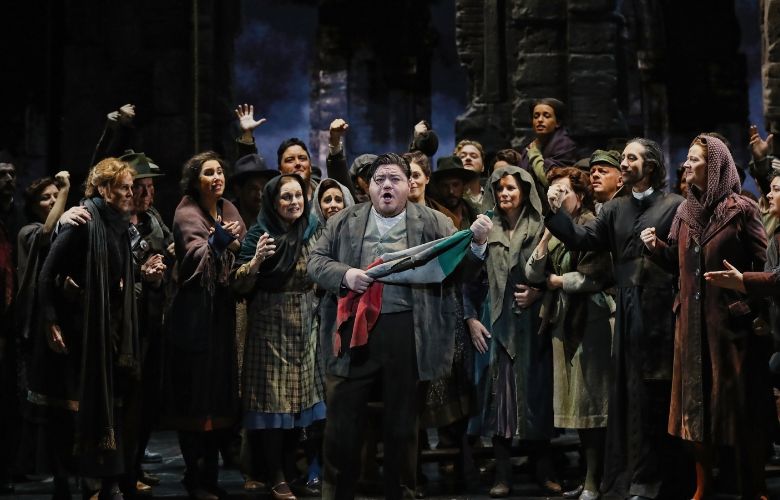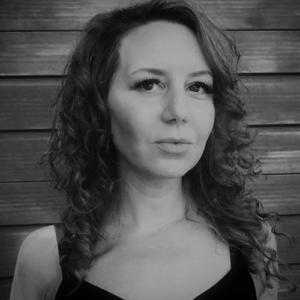
Kate Gaul is the revival director for Opera Australia’s production of Attila, which runs from 29th October – 5thNovember. Kate has been directing full-time since completing a one-year NIDA Director’s course in 1996 and has established herself as a distinctive and inventive director, with productions for such companies as Pinchgut Opera, Belvoir St Theatre, Ensemble Theatre, Griffin Theatre and Melbourne Theatre Company.
Kate’s most recent productions include Good With Maps (a Siren Theatre Co presented at Edinburgh Fringe Festival and Kings Cross Theatre); The Trouble with Harry (a Siren Theatre Co presented at Reginald Theatre); The Ham Funeral (a Siren Theatre Co presented at Griffin Theatre); Misterman (a Siren Theatre Co presented at Edinburgh Fringe Festival and Old Fitz Theatre); Invisible Circus (Belvoir St Theatre); Il Matrimonio Segreto for Conservatorium of Music; Castor et Pollux for Pinchgut Opera; The New Electric Ballroom (a Siren Theatre Co production presented at the Griffin Theatre); the opera Die Fledermaus for WAAPA; Beautiful: a Ghost Story for Mudlark Theatre, Tasmania; Fox a Monkeybaa Theatre production presented at the Seymour Centre, nominated at the 2011 Helpmann Awards – Best Direction; The Seagull (a Siren Theatre Co production presented at Sidetrack Theatre); Woman Before a Glass Karnak Productions, starring Diane Cilento and As You Like It (a Siren Theatre Co production presented at Carriageworks).
Kate has also moved into filmmaking, and her two short films, Cake and Embrace, have gone on to win numerous awards at Australian film festivals. Kate is also a costume designer, and has designed for numerous productions.
Following the postponement of Attila after just two performances back in 2020, the long-awaited return of this opera is highly anticipated for its large-scale production amongst other things. We talk to Kate Gaul about her fascinating multifaceted work, and bringing back the production following the pandemic.
Everything is running very smoothly. It’s great to be back in the room with such a lively and engaged cast. There are always new people coming into a production, so it keeps everyone on their toes. As usual our OA Chorus is really firing, and in this production they have an opportunity to be super individual in some of the staging and responses – which I really like.
Indeed! It does feel like we are very prepared. The essential story is the relationships and confrontations between the four major characters – patriots, war lords, slaves, and uneasy lovers – in an economic opera that brings passion and spectacle to the stage.
The production is set in an imagined warzone – it will resonate with images of the 20th Century. The chorus is deployed to create the carnage of war, and its aftermath. We have a dark, twisted party scene. It’s a brutal scenario. An Italian fresco comes to life and yes, there are two live horses onstage. I think the presence of the horses pushes the work beyond the everyday for sure.
It really works and certainly adds a level of dramatic lift seeing a principal opera singer arrive on a horse! There is also a love story at the centre of the work so there are moments of intimacy too.
One thing that works well in the design of this production is the combination of digital screens and more traditional scenery. Audiences should watch for the colour palettes in the crowd scenes. If you have an eye for design, there are some very unusual combinations at play to bring the scenes to life.
Scale is the first thing that comes to mind. Working on the Harbour productions is all about managing the vastness of the space and creating focus which is both visual and aural. It’s a huge undertaking but absolutely thrilling when it works.
Arts Centre Melbourne is a much bigger stage than the Joan Sutherland and it’s where Lohengrin was performed this year. It means the scenic elements can be much bigger as well as the chorus. I guess there are more technical elements to bring together on the bigger stages.
The Opera House has a beautiful intimacy which – rather than being a drawback – helps create some very special interpretations which are unique to performing there.
I love that I can work at all ends of the spectrum from very small touring solo theatre productions right through to grand operas. I would say that the scale of both kinds of work challenges and inspires me.
I enjoy pondering how to make work that speaks to specific audiences, to bring stories and characters to life whether through music, spoken word or physicality – or the combination of all.
I am very fortunate to be assisting on the new production for Opera Australia in the new year – Adriana Lecouvreur. Being part of a production that is fresh for local audiences will be marvellous.

The King of the Huns meets his match.
No one can stand before Attila and his hordes, until a warrior woman turns his head. As he opens his heart to his prisoner Odabella, the barbarian king reveals his weakness.
The scene is set for one of the great revenge operas of the 19th century: an early Verdi in the vein of Aida.
In the prelude, a mournful cello draws you down into the gravity and turmoil of war. Verdi’s score is full of darkness, rhythm and life, displaying the composer’s gift for creating emotion.
This co-production with La Scala was a tremendous success at its Milan premiere. It’s a “blockbuster spectacle” (Financial Times), with four vivid characters, two live horses and plenty of crowd scenes.
Director Davide Livermore fuses video projections with colossal set pieces to create an awe-inspiring world for Attila.
Taras Berezhansky to perform as Attila. Natalie Aroyan is Odabella with Diego Torre as Odabella’s lover Foresto. Mario Cassi performs as the Roman General, Ezio.
A CO-PRODUCTION BETWEEN OPERA AUSTRALIA AND THE TEATRO ALLA SCALA.
Verdi’s Attila is the Company’s first co-production with the prestigious Teatro alla Scala, after the COVID pandemic suspended its hugely successful 2020 premiere after only two performances and its 2021 run days before opening. OA Artistic Director Lyndon Terracini explains:
“We had magnificent feedback when Attila opened in 2020 and we’ve received requests to reschedule it ever since, so I’m ecstatic that we are able to present it again in the Sydney Opera House with most of the original cast and enable more people to experience such a marvellous production.”
Known for his work with Opera Australia’s innovative digital productions, renowned director Davide Livermore fuses together modern and traditional staging for Attila with digital projections, a colossal set and even two live horses.
The incredible direction, Giò Forma’s formidable sets, D-Wok’s captivating video designs and Gianluca Falaschi’s stunning costumes combine with Verdi’s soaring music and gripping story to ensure this production of Attila is nothing short of epic and one not to be missed.
Telling the story of the King of the Huns’ invasion of Italy, this revenge opera will feature a world-class cast including renowned bass Taras Berezhansky who will reprise his role as the barbarous Attila.
“Firm and focused across his range, Berezhansky’s appealing, dark-hued timbre and resounding strength captured Attila’s imposing authority and arrogant certainty.” – The Australian
Opera Australia favourites, soprano Natalie Aroyan and tenor Diego Torre will also reprise their roles of the warrior princess Odabella and her fiancé Foresto respectively. After performing to great acclaim as Giorgio Germont in La Traviata with Opera Australia earlier this year, Mario Cassi joins the cast as the determined Roman General Ezio.
OA principal singer, Virgilio Marino, will reprise his role as Breton slave Uldino, whilstregular OA principal bass Richard Anderson joins the cast as Pope Leo I.
One of the most outstanding young conductors in the world today, Italian Maestro Andrea Battistoni will lead the Opera Australia Orchestra, the Opera Australia Chorus and the Opera Australia Children’s Chorus in Verdi’s rarely performed work.
Opera Australia’s Attila runs from 29th October – 5th November
Accessibility At The Smith Center Series: Part One
James “Fitz” FitzSimmons Interview: The Boys In The Band On Netflix


Michelle is a musician and composer from the UK. She has performed across the UK and Europe and is passionate about arts education and opportunities for women and girls.
Read Full Profile© 2021 TheatreArtLife. All rights reserved.

Thank you so much for reading, but you have now reached your free article limit for this month.
Our contributors are currently writing more articles for you to enjoy.
To keep reading, all you have to do is become a subscriber and then you can read unlimited articles anytime.
Your investment will help us continue to ignite connections across the globe in live entertainment and build this community for industry professionals.